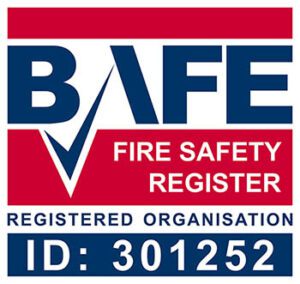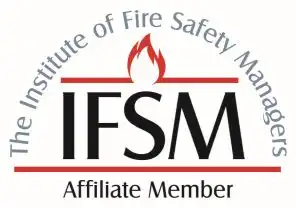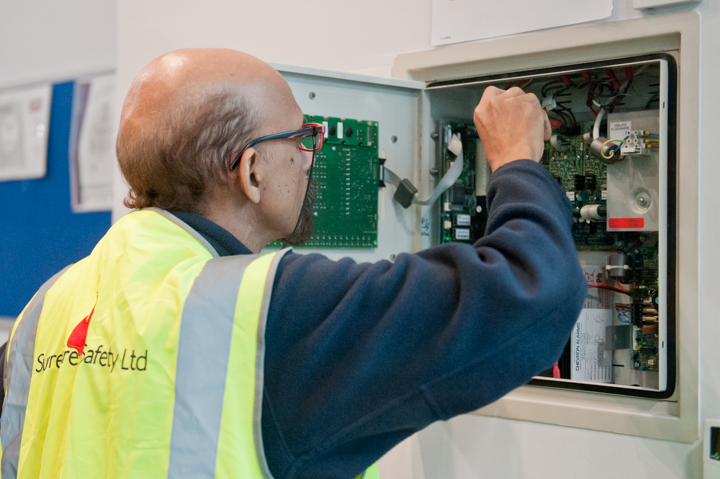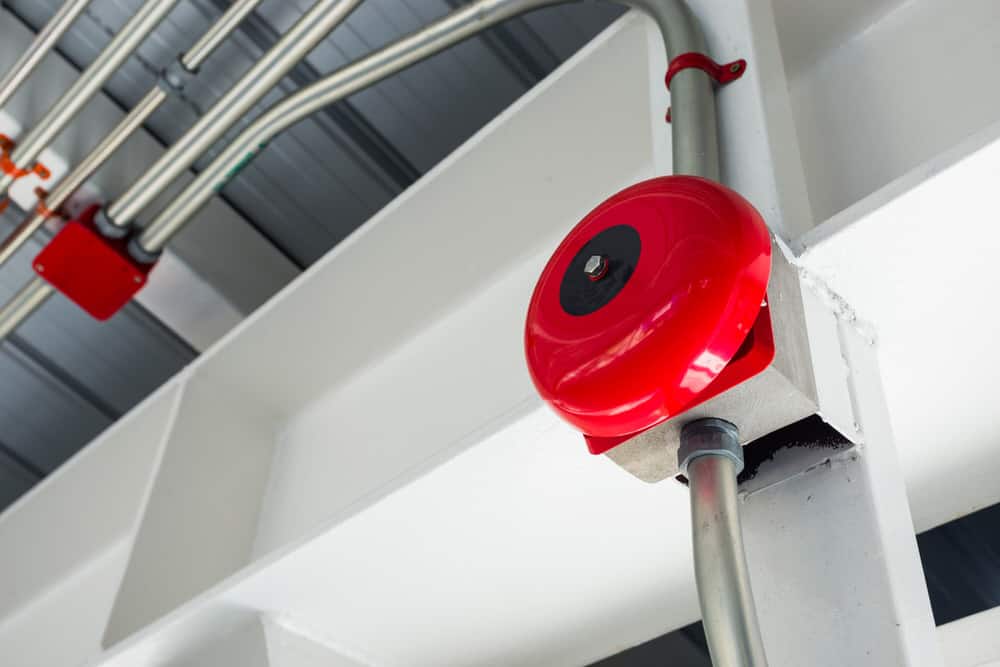
Businesses differ from each other significantly and fire alarm categories are no different.
Fire safety regulations require that any fire alarms you install are fit for purpose.
By choosing fire alarms in the correct category, you can ensure that your staff remain safe and that you mitigate risks to your property.
Fire alarm grades explained
Fire alarms come in grades ranging from A through F, with A being the highest and F being the lowest.
The grades capture the quality of the system. Most domestic homes occupy the D to F range, requiring a battery and sometimes connection to a mains supply.
Businesses that fall into grades A to C usually have to have fire detection and alarm systems comprising multiple technologies, such as heat detectors, fire alarms and sounders, and indicating equipment.
Grade A equipment should have a control system that conforms to BS5839 Part 1 or Part 6.
Fire alarm categories explained
Fire alarm system categories and grades are different. Categories capture the level of protection that a system provides according to the recommendations of the BS5839 British Standards documents.
In total there are eight categories that apply to commercial properties, split up into manual systems (where staff must physically activate the alarm), automatic systems for the protection of life, and automatic systems for the protection of property.
Businesses can usually determine which category of system they need by conducting a thorough fire risk assessment.
For instance, businesses with high-risk areas such as boiler rooms, machinery depots and plant rooms often require the most comprehensive fire alarm systems.
Below we break down the fire alarm system categories in detail:
Category M – Manual fire alarm system
Manual fire alarm systems are the most basic. Employees must physically operate alarms manually on the discovery of fire to alert everyone else in the building to the danger.
Usually, manual fire alarm systems use breakable glass units installed strategically across the building, which then activates the premises-wide alarm system.
(Some manual systems, however, still rely on handbells or gongs if the premises are very small and don’t require more than one sounder to effectively sound the alarm throughout the premises.)
Category L1 – Maximum life protection automated fire alarm system
L1 maximum life protection automated fire alarm systems are the most comprehensive and feature multiple detectors in all parts of the building that a fire could start, including larger cupboards, roof spaces and voids.
The goal is to provide the earliest possible warning for occupants to ensure the preservation of life. The system must cover all areas of a building, with some minor exceptions, including small cupboards and lobbies.
Category L2 – Additional life protection automated fire alarm system
L2 alarm systems provide occupants of a building with advanced warning of the existence of a fire in another room.
Typically, this involves placing fire and smoke alarms in high-risk rooms and opening onto escape routes leading to fire exits. In small and medium-sized premises, L2 systems place fire detectors in areas where the risk of ignition is high, such as kitchens.
Category L3 – Standard life protection automated fire alarm system
Category L3 fire alarm systems – sometimes called standard life protection systems – feature alarms placed along all escape routes leading from the interior of the premises to fire exits.
The goal here is to ensure that all building occupants have sufficient warning to get out of the building before smoke, fire and toxic fumes begin impeding their exit. Unlike L2 systems, L3 systems do not have to place alarms close to high-risk sources of ignition.
Category L4 – Modest life protection automated fire alarm system
L4 systems only place detectors along escape routes such as hallways and stairwells and corresponding circulation areas, not individual rooms.
Businesses that use L4 systems usually operate in a low-risk environment where everyone can exit quickly in the event of a fire.
Ground floor offices, for instance, may only use L4 alarms in their entryways because staff can leave the building quickly.
These systems, however, are not suitable for multi-storey offices where it could take employees longer to escape via stairwells.
Category L5 – Localised life protection automated fire alarm system
L5 category alarms are a specific type of automated fire systems that tackles fire hazards in high-risk areas.
For example, a factory might install additional fire detection equipment in an area dedicated to welding because of the risk of spark ignition.
Conceptually, L5 alarms are different from other types of systems discussed so far. Conceivably, you could have a business operating an L4 system across its premises, but employing L5 in specific, high-risk rooms.
For instance, some companies might install fire detection equipment to L5 standards in a server room while leaving the rest of the building unchanged.
Category P1 – Maximum property protection automated fire alarm system
Category P1 systems maximally protect property from fire. In business, this usually means providing extra safety measures in operationally critical areas.
A utility company, for instance, might install a P1 system in a computer room where it stores all of its customer data.
The purpose of P1 systems is to detect fires quickly and eliminate them before they can cause significant damage. By detecting them early enough, occupants can protect life and preserve critical business assets.
Essentially, P1 systems are a form of business continuity planning. These systems help you reduce disruption and lower clean-up costs.
Category P2 – Minimum property protection automated fire alarm system
P1 systems install fire and smoke detectors across the entire premises. P2 systems place them in high-risk areas only.
P2 systems are cost-saving measures that make more efficient use of funds. However, they can let businesses down if fires start in unexpected places.
Above we have listed fire alarm categories relating specifically to business properties, there are separate categories for domestic properties, which follow a similar format.
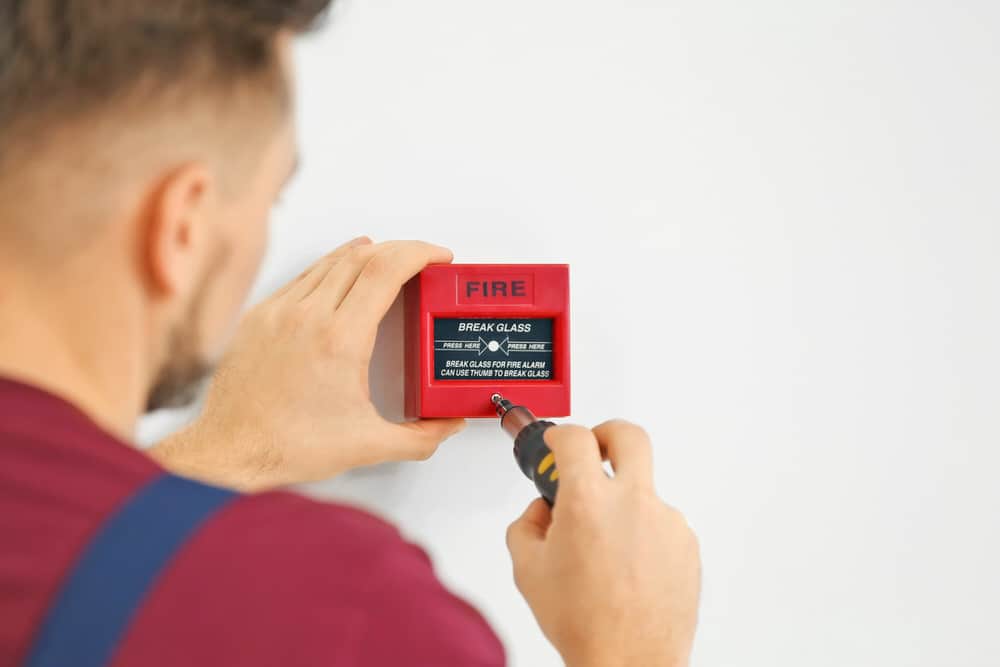
Category LD1 – Maximum life protection for a domestic property
LD1 alarm systems are installed throughout domestic premises. Detectors are fitted in all areas that form escape routes and in all rooms and other areas, other than those that have a low risk of ignition, such as bathrooms and toilets.
The goal is to provide the earliest possible warning for occupants to ensure the preservation of life.
Category LD2 – Additional life protection for a domestic property
LD2 fire alarm systems require detectors to be installed in circulation areas that form part of the escape routes, and in certain rooms or areas that present a high risk of fire to occupants. This would include a kitchen and a key habitable room in the building.
Category LD3 – Standard life protection for a domestic property
Category LD3 systems feature detectors in all areas that form escape routes from the property. Unlike LD2 systems, LD3 systems do not have to place alarms close to high-risk sources of ignition.
Learn more about the categories and regulations
Knowing which fire alarm category to install on your premises can be challenging.
Fortunately, the Surrey Fire & Safety team can help by consulting with your business and providing industry-leading advice on which systems you should be using.
Get in touch for a free survey. Read our fires safety blog to find out more about fire alarm regulations and how they affect your organisation. Don’t leave it to chance.
Find out more about our fire alarm services at the links below:
Fire Alarm Installation – Fire Alarm Servicing – Fire Alarm Testing



